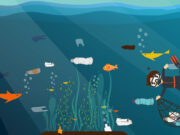Cozumel is a dream destination, offering world-class drift dives, stunning coral formations, and diverse marine life. There are a variety of dive sites to explore, ranging from deep walls to intricate coral gardens, and an abundance of reef and pelagic life to encounter. Whether you’re navigating the depths of Devil’s Throat or gliding along the Santa Rosa Wall, this dive destination is hard to beat. Thinking of a dive trip to Mexico? Here are the top dive sites in Cozumel, the best time to visit, and how to get there.
Top Dive Sites in Cozumel
1. Palancar Reef
Palancar Reef is one of the most famous places to go diving in Cozumel, known for its towering coral formations and vibrant marine life. The reef is divided into several sections, each offering something different for divers.
The sheer coral walls here drop dramatically, creating a breathtaking underwater landscape. Divers can weave in and out of swim-throughs and caverns, adding an adventurous element to the dive.
Expect to encounter sea turtles, eagle rays, and tropical fish at this beautiful dive site. Palancar Reef is also home to colourful sponges, sea fans, and the occasional nurse shark.
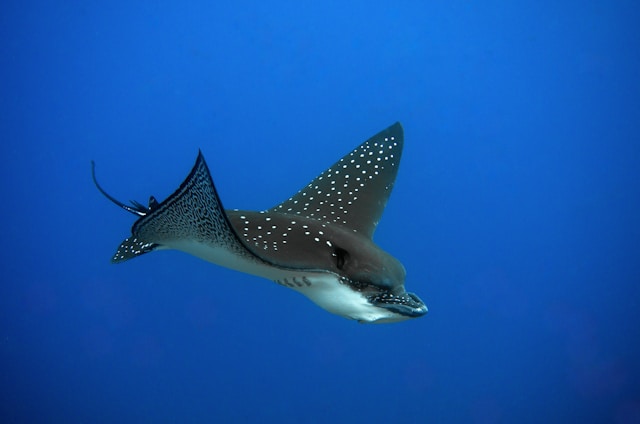
2. Santa Rosa Wall
The Santa Rosa Wall is a great dive site for divers seeking a thrilling wall dive. This dive is fast-paced due to the current and the wall drops off into the abyss. Keep your eyes peeled for large pelagic species, as well as moray eels hiding within the crevices of the wall. Coral formations and colourful sponges cover the wall, providing a stunning backdrop.
3. Columbia Reef
Columbia Reef is known for its towering pinnacles, coral caves, caverns, and tunnels, making it a fascinating dive site. This site is deeper and best suited for divers who are comfortable navigating varying depths.
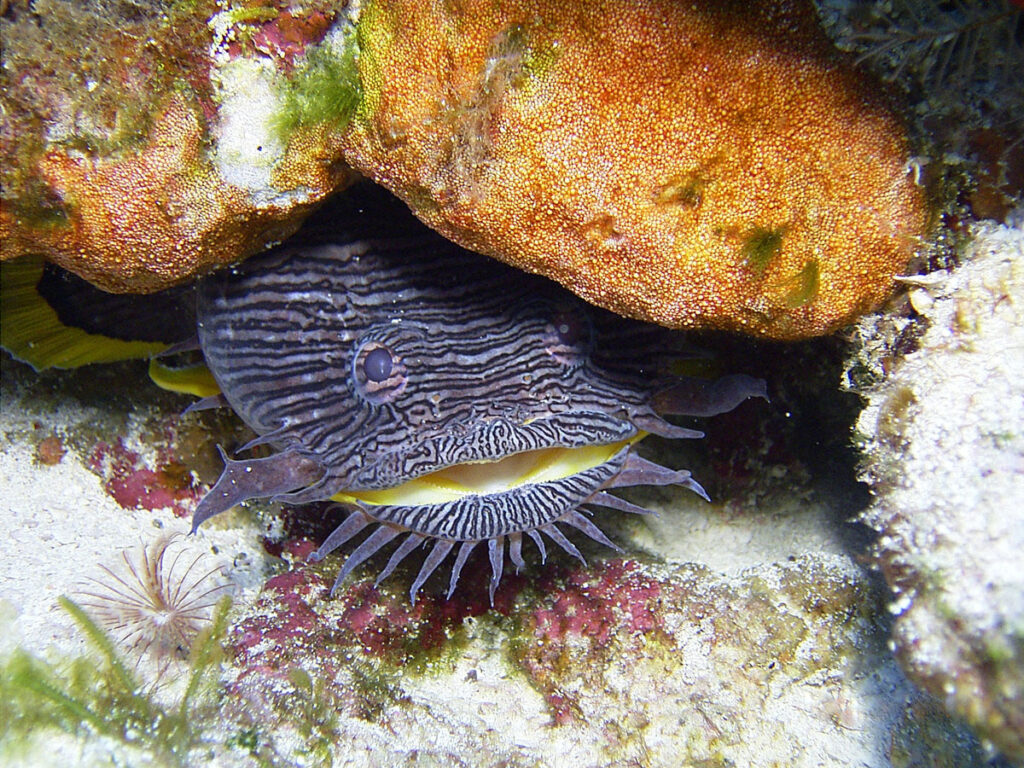
The coral pinnacles rise from the ocean floor, creating an intricate landscape that divers can explore at various depths. The reef is well-preserved, with vibrant corals teeming with life. Divers can spot groupers, barracudas, turtles, and endemic Splendid toadfish. The deep coral formations provide shelter for smaller reef fish and macro life, adding diversity to the dive.

4. Punta Tunich
Punta Tunich is known for its fast drift dives, making it one of Cozumel’s more challenging dive sites. The strong current allows divers to cover a large area without much effort. The reef is a mixture of hard and soft corals and there is a thriving wall to explore. Large schools of fish, eagle rays, and barracudas are common sights here. Keep an eye out for lobsters, moray eels, and the occasional nurse shark hiding among the coral.
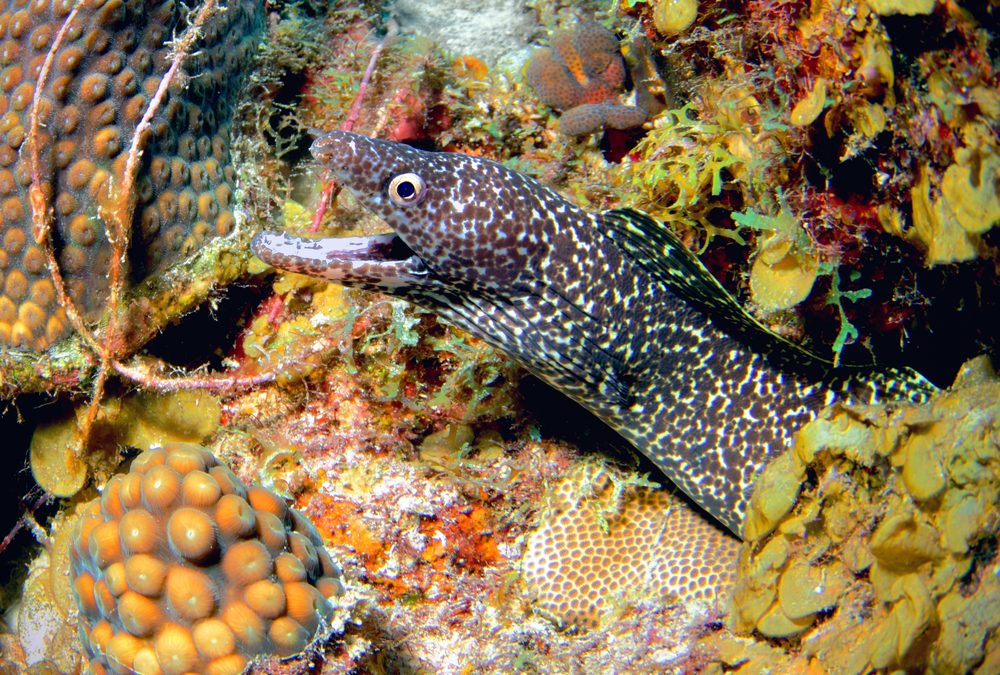
5. Devil’s Throat
Located at Punta Sur, Devil’s Throat is one of Cozumel’s most famous dive sites. This deep dive takes you through a narrow tunnel, earning its ominous name. The entrance to the Devil’s Throat is at around 27 meters (90 feet), and the tunnel descends into a dark, narrow passage that opens up into the blue abyss. The dive is both thrilling and technically challenging.
Due to the depth and limited light, this dive is more about the thrill of the environment than marine life. However, keep your eyes open for larger marine life such as Caribbean reef sharks, turtles, eagle rays, and stingrays as you descend.
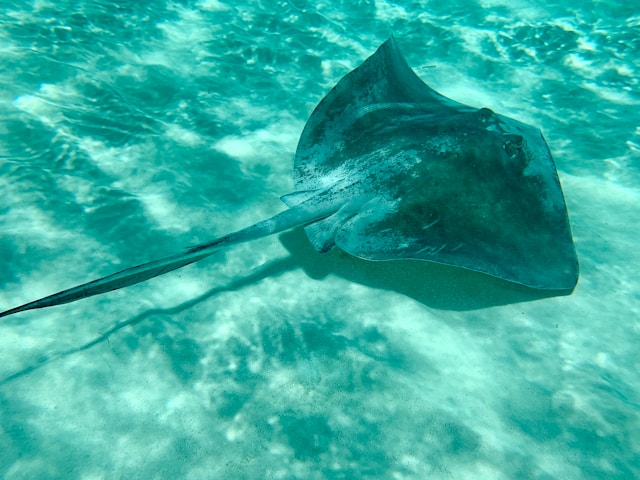
6. Cedar Pass
Cedar Pass offers a beautiful drift dive over a sloping coral reef, with plenty of crevices for marine life to hide. This is a shallow dive great for beginners and the gradual slope allows divers to explore different depths while enjoying the steady drift of the current. The coral here is incredibly healthy, making it a vibrant site.
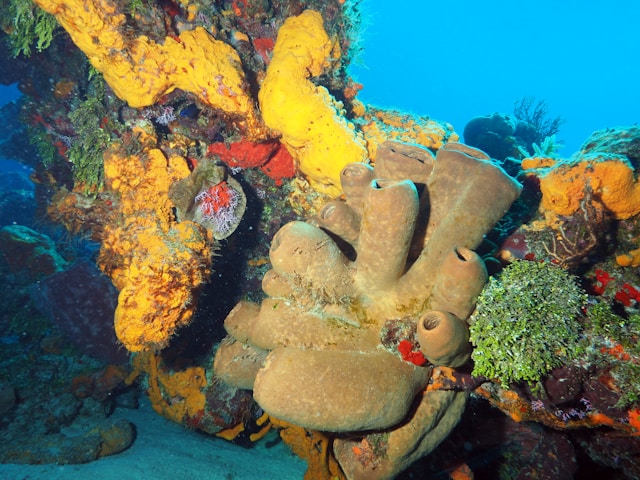
Expect to see schools of grunts, snappers, and jacks, along with eagle rays, nurse sharks, turtles, stingrays, moray eels, numerous reef fish, and the endemic Splendid toadfish.
Experience Level and Dive Conditions
Many dive sites in Cozumel are perfect for divers of all levels, though some are best suited to Advanced Open Water Diver and more experienced divers due to the currents and depth. Cozumel’s drift dives vary from easy to challenging depending on the site and current.
Water temperatures in Cozumel range from 26°C to 29°C (78°F to 84°F) year-round, making it comfortable for diving in a 3mm wetsuit. Visibility is generally excellent, ranging from 24 to 30 meters (80 to 100 feet). On calm days, you can often see even further.
Currents are a key feature of Cozumel diving, and drift dives are the norm. While the current can be mild, it’s a good idea to get a drift diving certification to make the most of Cozumel’s more challenging dive sites.
Best Time to Dive in Cozumel
Cozumel is a year-round diving destination, but the best time to visit depends on your preferences. December to April is the most popular time for diving in Cozumel, with calm seas, warm water, and excellent visibility. However, it’s also the busiest time of year, so expect more divers at popular sites.
Hurricane Season is from June to November. While Cozumel can experience hurricanes during these months, it’s also a quieter time for tourism. September and October are the peak of hurricane season, so divers should monitor the weather closely. When the weather is clear, the diving is still fantastic during this period.
Cozumel’s whale shark season occurs between May and September, and while this is north of Cozumel, many divers combine trips to Isla Mujeres or Holbox with their Cozumel dives.
How to Get to Cozumel
Cozumel is easily accessible by air and sea. Cozumel International Airport (CZM) has direct flights from many major cities in the U.S. and Canada. You can also fly into Cancún International Airport (CUN) and take a ferry from Playa del Carmen to Cozumel. The ferry ride takes about 30 to 40 minutes and runs frequently throughout the day.
This article was written by Kathryn Curzon, a dive travel writer for SSI.






